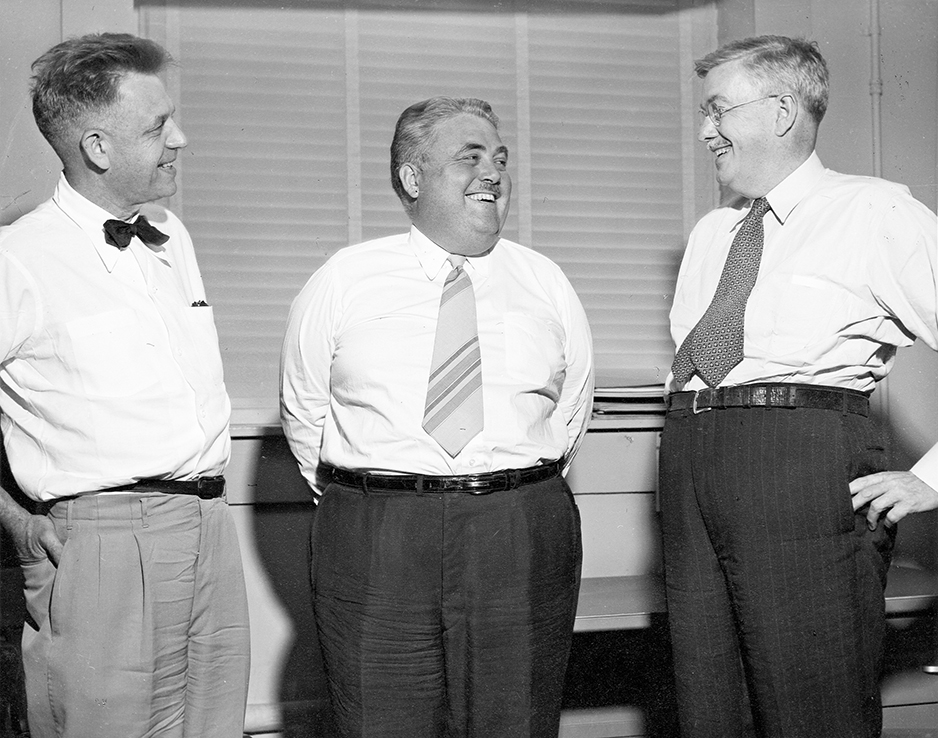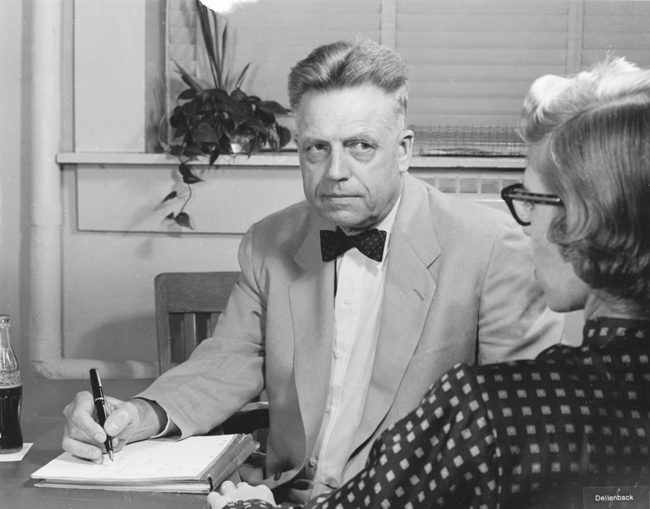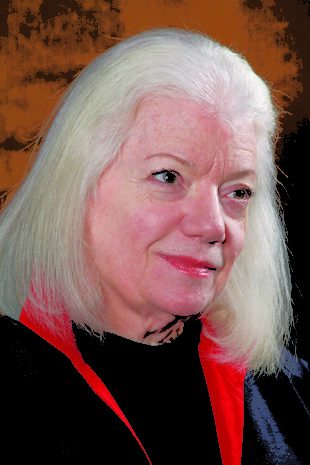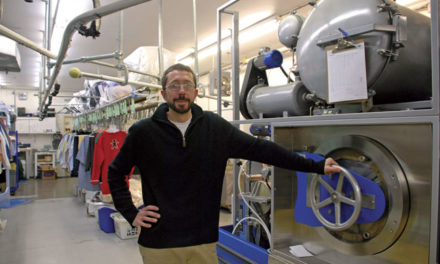
(l-r) Alfred Kinsey, Indiana University President Herman B Wells, and George Corner, who was with the Carnegie Institute and head of the National Research Council’s Committee for Research on Problems of Sex. Photo courtesy of IU Archives
BY PETER DORFMAN
This year marks a milestone for the Kinsey Institute as Indiana University celebrates the 70th anniversary of what is arguably the world’s most influential center for the study of human sexuality.
On April 8, 1947, Dr. Alfred Kinsey and his colleagues studying human sexual behavior established what was then called the Institute for Sex Research. Funded in large part by IU, the institute supported the team’s research and housed its library and collections.

Alfred Kinsey. Photo courtesy of IU Archives
Kinsey was a pioneer, not just in sex research but in creating systems to protect the anonymity of research subjects—systems that influenced all of the social sciences. He died in 1956, and in 1981, on the 25th anniversary of his death, the facility was renamed The Alfred C. Kinsey Institute for Research, Inc. In 1982, under the directorship of June Reinisch, the name was changed to The Kinsey Institute for Research in Sex, Gender, and Reproduction, still the official name.
Herman B Wells, IU president at the time of the institute’s founding, recognized the importance of Kinsey’s work, and put it under the permanent protection of the university, but it remained a nonprofit research institution until December 2016 when it officially merged with Indiana University. The Kinsey Institute continues to be supported by the Office of the Vice Provost for Research and by grants and private and federal resources.
Later this year, IU Press will release a new book entitled The Kinsey Institute: The First 70 Years. Lead author Dr. Judith Allen is an IU history professor and senior research fellow at the Kinsey Institute.
Otherwise, celebrations will remain low-key. A water line break flooded the institute’s offices and library in June 2016, closing them for several months. While nothing from the collection was significantly damaged, operations are just now getting back to normal.
“Our doors are open,” says Sue Carter, the institute’s executive director since 2014. “We used to have about 4,000 visitors a year. For now, though, visits are by appointment only.”
The institute houses roughly 500,000 items, including 110,000 works of art. Other materials include research archives—among them Kinsey’s and those of renowned sex researchers William Masters and Virginia Johnson.
Anniversary celebrations do include exhibitions of materials from the collection. The institute contributed to several recent traveling exhibitions. Its archival photographs were also included in a tattoo exhibition at IU’s Grunwald Gallery earlier this year, and the institute collaborated this winter with the World Erotic Art Museum in Miami, Florida, on an exhibit of male nudes.

Sue Carter, executive director of the Kinsey Institute since 2014. Courtesy photo
The art collection exists, principally, because in the late 1940s, donors felt these materials needed a safe haven. “People brought things they were concerned might be destroyed or vulnerable to the politics of that time period,” says Carter, a biologist who studies the hormonal basis of sexuality and relationships. “During World War II, the Nazis had gone through Europe and destroyed a lot of what they considered degenerate art. People gave these kinds of things to Kinsey to protect them. As far as we know, he never intended to display them. But he did mean for them to be available as historical documents.”
Kinsey became famous for his studies involving several thousand interviews with individual volunteers. The interviews were intended to establish a broad, open-minded catalog of sexual behavior, which was uncharted territory in the 1940s. The institute no longer conducts those kinds of interviews, although its researchers use similar methods in more specific studies.
Though it was conducted long ago, Kinsey’s own work continues to have value. “Dr. Kinsey’s research data became the foundation of our collection,” says Liana Zhou, director of the Kinsey Institute Library and Archives. “While he was interviewing, people began to share very personal artifacts they had accumulated—their life histories, their love letters, their diaries. They sent these things to Kinsey because they trusted him.”
Justin Garcia, the institute’s associate director for research education, adds: “It speaks to the complicated role of sexuality in our lives that people attach importance to objects like these.
These items are valuable on a personal level and to us from a research perspective.”
Additionally, institute researchers now have access to resources that didn’t exist in Alfred Kinsey’s day. For example, the website Match.com collaborates with the Kinsey Institute to collect anonymized data for analysis as part of an annual research study called Singles in America.
The Kinsey Institute continues to be a valuable resource for the university and the community. “Our library is open to anyone with a legitimate scholarly need,” Carter says. The institute also welcomes inquiries from the public, and has an active social media presence.
The Kinsey Institute is located on the IU campus in Morrison Hall, 1165 E. 3rd St. For more information, visit kinseyinstitute.org.






